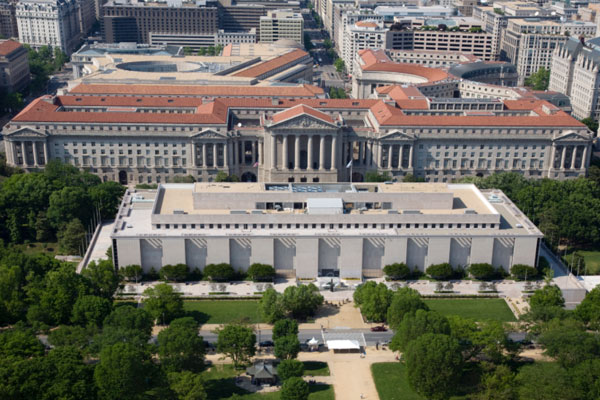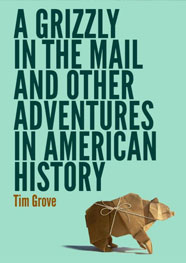Five Things Historians and Teachers Need to Do to Make History Fun

 We all know people who claim they hate
history. They won’t set foot in a history museum. They shudder at
school memories of forced memorization of dates and names. Their
teachers somehow never conveyed the fun in the process. Maybe their
teachers had never worked with primary sources. Those of us who
practice history professionally got hooked on history for a reason.
Somewhere along the way, we found the joy of primary source
materials, the thrill of holding the past in our hands. As a public
historian who has worked for over twenty years in some of America’s
most popular history museums, here are my suggestions for what we
need to do to make history fun.
We all know people who claim they hate
history. They won’t set foot in a history museum. They shudder at
school memories of forced memorization of dates and names. Their
teachers somehow never conveyed the fun in the process. Maybe their
teachers had never worked with primary sources. Those of us who
practice history professionally got hooked on history for a reason.
Somewhere along the way, we found the joy of primary source
materials, the thrill of holding the past in our hands. As a public
historian who has worked for over twenty years in some of America’s
most popular history museums, here are my suggestions for what we
need to do to make history fun.
Share your sources. Ask your audience questions and get them looking at the evidence.
All too often we feed people our conclusions after we have had the fun analyzing the evidence. For six years I managed the Hands On History Room (HOHR) at the Smithsonian National Museum of American History. The activity-based learning center was an international model of museum education, a place for all ages to interact with primary source materials and to do the rudimentary detective work of historians. Visitors could gin cotton, assemble a Chippendale chair, send a message by Morse code, harness a mule, ride a highwheel bicycle and other activities. Over six years I watched visitors have fun in the HOHR and I read their glowing comments in the comment book. Many of them wrote “I never knew history could be so fun!”
Make a personal connection.
When developing exhibitions, I always try to think about how to make the personal connection. I helped develop an exhibition at the National Museum of American History about a 250-year-old house from Ipswich, Massachusetts. A section of the exhibition encouraged visitors to research their own homes and gave them tips for how to do it. An exhibition I developed at the National Air and Space Museum included the simple question “Could you have been a stewardess in the 1950s?” The display featured a full-length mirror with a life-size cut-out of a stewardess from a historic photograph – checking her uniform. It also included an ad from the time period and flip panels with the various qualifications – age, race, gender, education, height, weight, appearance – with the requirements hidden underneath each panel. Curiosity compels most people to lift the panels to see how many of the requirements they meet.
Introduce the unexpected.
There is power in the unexpected. Sometimes a different perspective or new historical evidence gives a twist to a story people thought they knew. At the cotton gin in the Hands On History Room, visitors learned that Eli Whitney did not invent the cotton gin, he invented a type of cotton gin. There were gins in use for many years before Whitney. I developed the National Lewis and Clark Bicentennial Exhibition which took a different approach to the story – instead of focus on the natural landscape, the exhibition looked at the cultural landscape. Visitors were fascinated to learn that the expedition traveled through a peopled landscape filled with complex cultures, expansive trade networks, and tribal tensions.
Never forget people stories.
In an exhibition about commercial aviation at the National Air and Space Museum, my colleagues and I introduced visitors to an airmail pilot named “Wild Bill” Hopson. Few people have heard of him, but he was one of the intrepid pilots who risked his life to deliver the mail in all kinds of conditions. Sadly he lost his life flying “hell stretch” in central Pennsylvania. The story gets better because he was carrying a load of diamonds. For the same exhibition we uncovered the story of reporter Herbert Ekins, who decided to travel around the world by commercial aviation in 1935. It became a race when rival newspapers sent their reporters to beat him.
Find ways to convey your joy
If you’re a historian, you no doubt love the detective work of research ―analyzing sources and putting the pieces of the puzzle together, forming interpretations and drawing conclusions. We need to find ways to convey this enjoyment to the public. By sharing our favorite sources and the story of how we came to a certain conclusion, we lift the veil on our process. Carolyn Gilman, historian for the National Lewis and Clark Bicentennial Exhibition, used to describe what she called her “five-year scavenger hunt” to research the exhibition. She enjoyed the research on the artifacts’ provenance just as much as the research on their use. She wrote in the exhibition catalog: “This process revealed that the objects have gone through nearly as many adventures as the Corps of Discovery itself. Their stories are full of lawsuits, eccentric descendants, scholars absconding with the goods, and tragic museum fires.” Her joy in the process showed in the final product.
About eight years ago I began to write about the fun I’ve had working on various history projects. I’ve worked hard to make history accessible to millions of people. Eventually my stories became a book that has recently been published as A Grizzly in the Mail and Other Adventures in American History. A book was not my initial intent, but as I wrote, I realized that my stories could demonstrate to a wide audience that the pursuit of history is anything but boring. Part insider perspective, part scholarship and part memoir, the book attempts to lift the veil on the historical process. I want to encourage my colleagues to do the same. The bottom line is that all historians have stories to tell about how they navigated the research trail. Research is much more than sitting at a computer or in dusty archives. While scholarly books have a vital place in the discipline, more popular histories that demonstrate the fun of the history process might just make people think that history is not so boring after all.